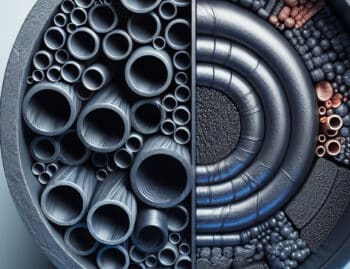Steel pipes are everywhere. They carry water, gas, oil, and many other things. In earthquake prone areas and locations where soil failure and ground motion are an issue, those steel pipes may need seismic retrofitting.
Seismic retrofitting for pipes requires modification and fortification of pipes to ensure they can withstand seismic activity. It’s a well-established and respected practice used worldwide to protect infrastructure and allow for the uninterrupted flow of resources above and below the ground. Seismic retrofitting of pipes is often done in urban areas.
While making steel pipes completely earthquake-proof isn’t possible, seismic retrofitting of pipes greatly enhances their ability to remain intact during ground motion, soil failure and other types of forces that put excess pressure on the steel pipes. The process has resulted in the greatly improved seismic performance of the pipes whether they are used for construction or industrial applications.
It is a testament to the design and implementation of these processes which provide needed reinforcement to existing pipes in seismically active areas.
The Pipe Retrofitting Process
The objective of pipe seismic retrofitting is to increase the steel pipe’s strength and its deformability.
By increasing the pipe’s strength, the seismic retrofitting process enables it to withstand more weight and better stand up to the crushing forces released during earthquakes, ground motion, and soil failure.Increasing the deformability of the pipe by retrofitting it means the pipe is more likely to bend but not break during episodes of seismic movement.
Another method that can be used in the process of retrofitting pipes is to reduce the deformation demands put on the pipes. There are a number of ways to do this. However, the most popular methods involved putting a protective framework in place which will prevent the full force of the seismic activity from being brought to bear on the pipes.
While the pipe retrofitting may take many different forms depending on the role the steel pipes are being utilized in and the environment in which the pipes are being employed, the goal is always the same. Prevent the pipes from breaking.
Codes and Laws
There are detailed technical guidelines which must be adhered to when undertaking the assessment, retrofitting, and rehabilitation of pipes in areas where seismic activity is prevalent or has recently occurred anywhere in the world.
Those published guidelines inform the engineers and technicians charged with handling the pipe retrofitting process. Their focus is making the structural improvements that will reduce the hazards that may result from earthquakes and other types of seismic activity.
The seismic retrofitting of pipes must follow strict rules. The death and destruction wrought by earthquakes, drilling and mining ground failures, and industrial accidents has forced governments, industry watchdog organizations, worker safety advocates, and environmentalists to create and enact codes and laws governing the need for retrofitting and the retrofitting process itself.
These include the UBC and ASME codes, the National Hazard Reduction Program initiated by FEMA, and a number of other guidelines designed to prevent injury and loss of life.
The Risks
Laws, codes, and guidelines are necessary to ensure companies engaged in retrofitting pipes to resist seismic movement do the job right. If clearly define processes, quality materials, and high standards are not used to ensure the retrofitting is properly done, the results can be catastrophic.
Retrofitted pipes that give way during seismic events can exacerbate already dangerous situation. If the retrofitted pipes are not able to maintain their integrity, oil, gas, and water can be added to a volatile situation with disastrous results.
The seismic retrofitting of pipes has already saved many lives. And it is counted on in countries and major cities worldwide to continue to do just that.
It places like Japan and states like California, and industrial settings where seismic activity is a dangerous threat, retrofitting steel pipes to withstand seismic activity has played a major role in helping to protect people’s lives.











